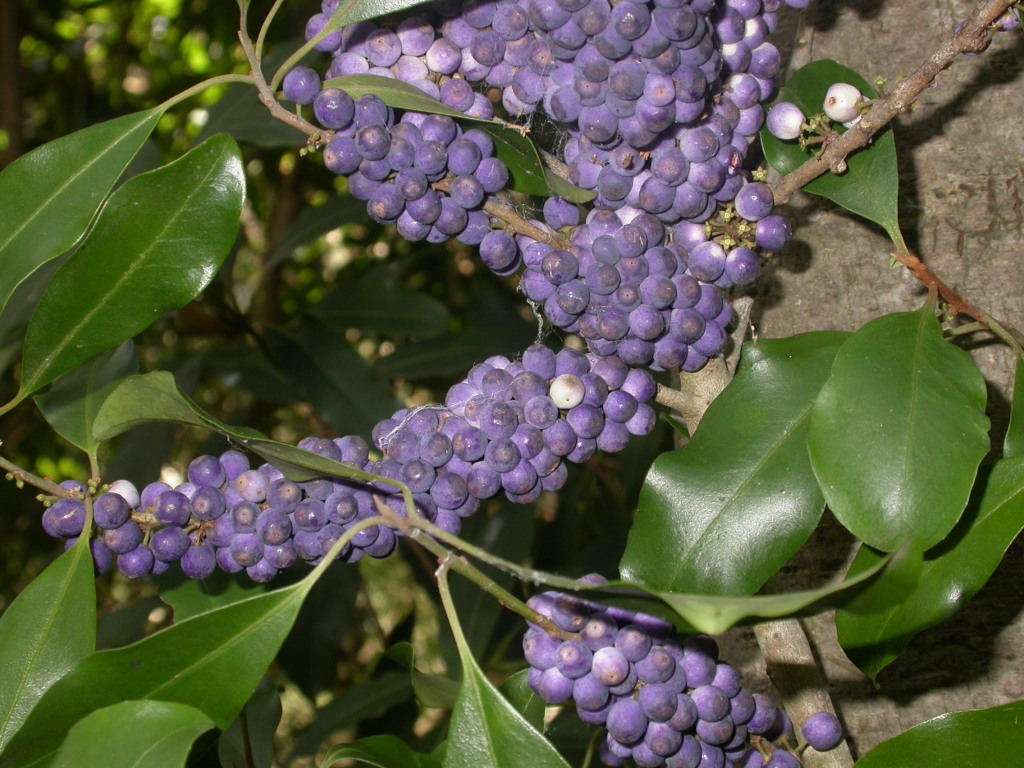Myrsine howittiana
(F.Muell. ex Mez) JackesSmall tree to c. 15 m high; branches slender, apices densely covered by appressed rusty hairs. Leaves obovate to oblong-elliptic, 33–100 mm long, 10–45 mm wide; apex rounded or broadly acute; margins entire at maturity, often irregularly toothed when young; petiole 7–12 mm long, dots and short streaks clear to pale red, often obscure. Flowers unisexual or bisexual, 5-merous, 5–9 per cluster; pedicel 2–5 mm long, densely to sparsely pubescent; calyx c. 1 mm long; corolla cream, female and/or hermaphrodite flowers with petals c. 2 mm long, caducous; stigma somewhat lobed; corolla of male flowers c. 3 mm long, persistent. Fruit fleshy and blue at maturity (immature fruit with glands concentrated towards the apex), 5–6 mm long and wide. Flowers mostly summer.
VVP, GipP, OtP, CVU, EGL, EGU, WPro, HSF, HNF, Strz, HFE, VAlp. Also Qld, NSW. Occurs in sheltered sites in moist, shaded sites from near sea-level to c. 400 m (e.g. riparian forests and scrubs, tall open-forest, warm-temperate rainforest).
Jackes, B.R. (1996). Myrsinaceae. In: Walsh, N.G.; Entwisle, T.J., Flora of Victoria Vol. 3, Dicotyledons Winteraceae to Myrtaceae, pp. 515–516. Inkata Press, Melbourne.
 Spinning
Spinning

